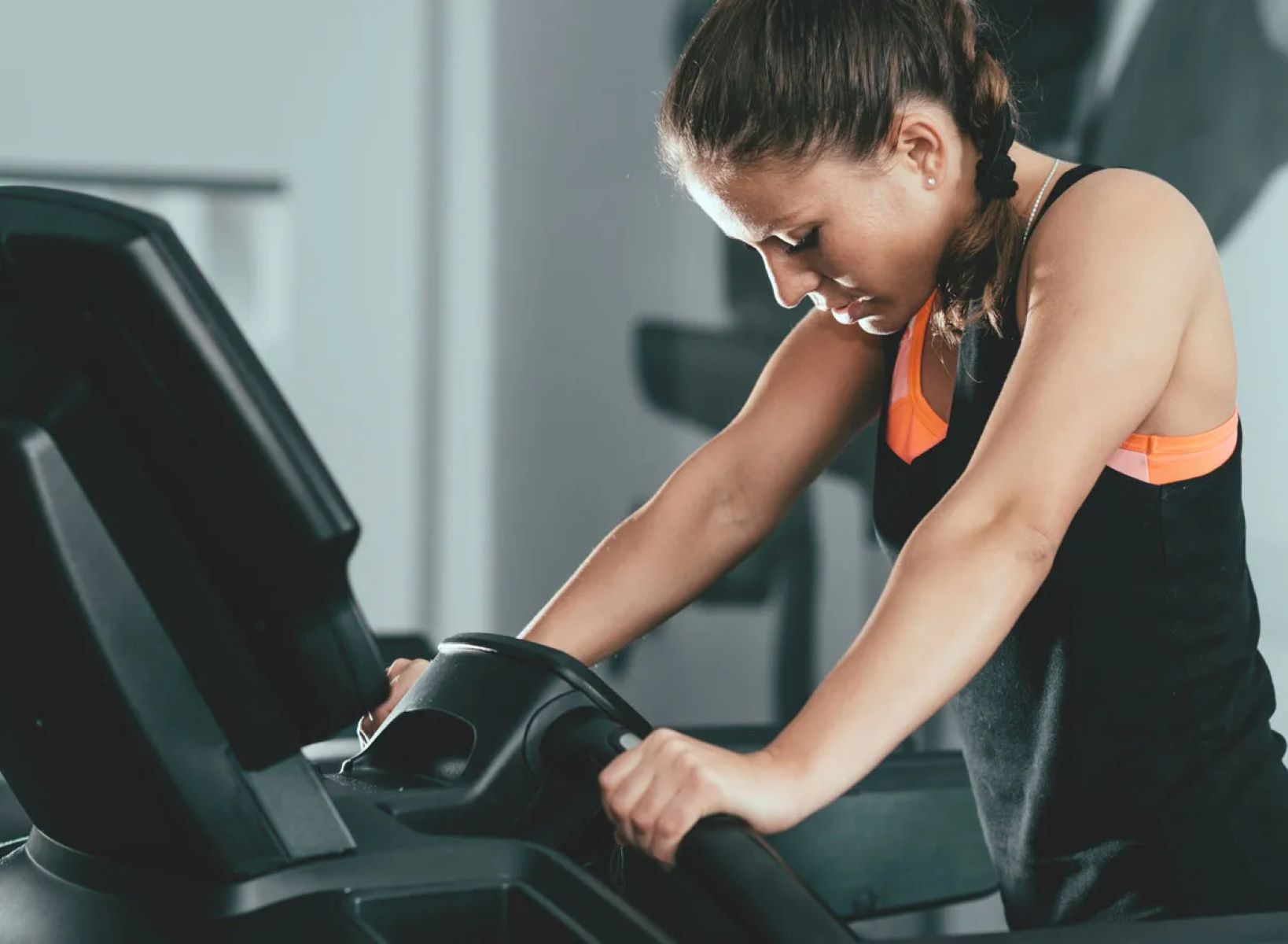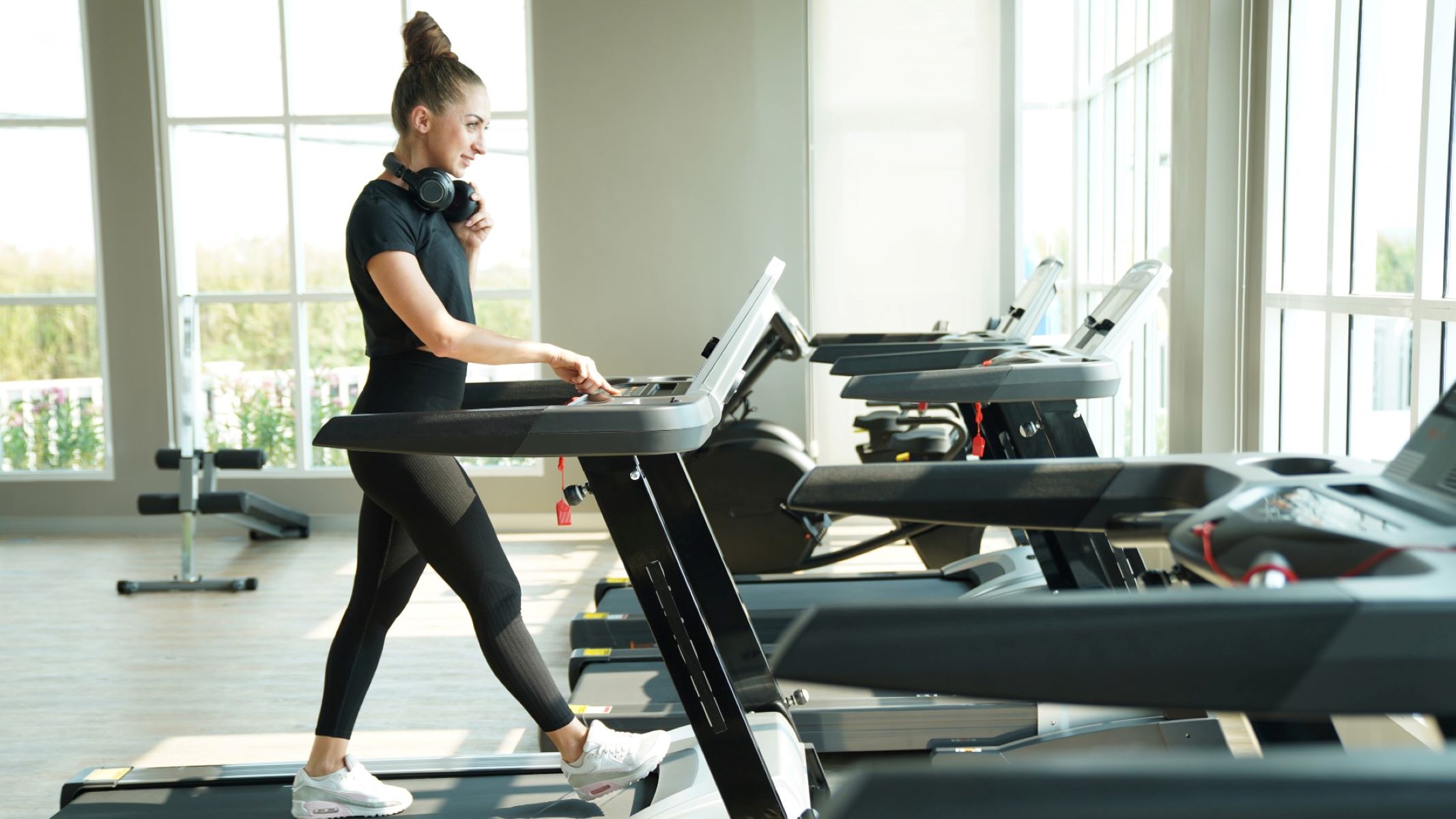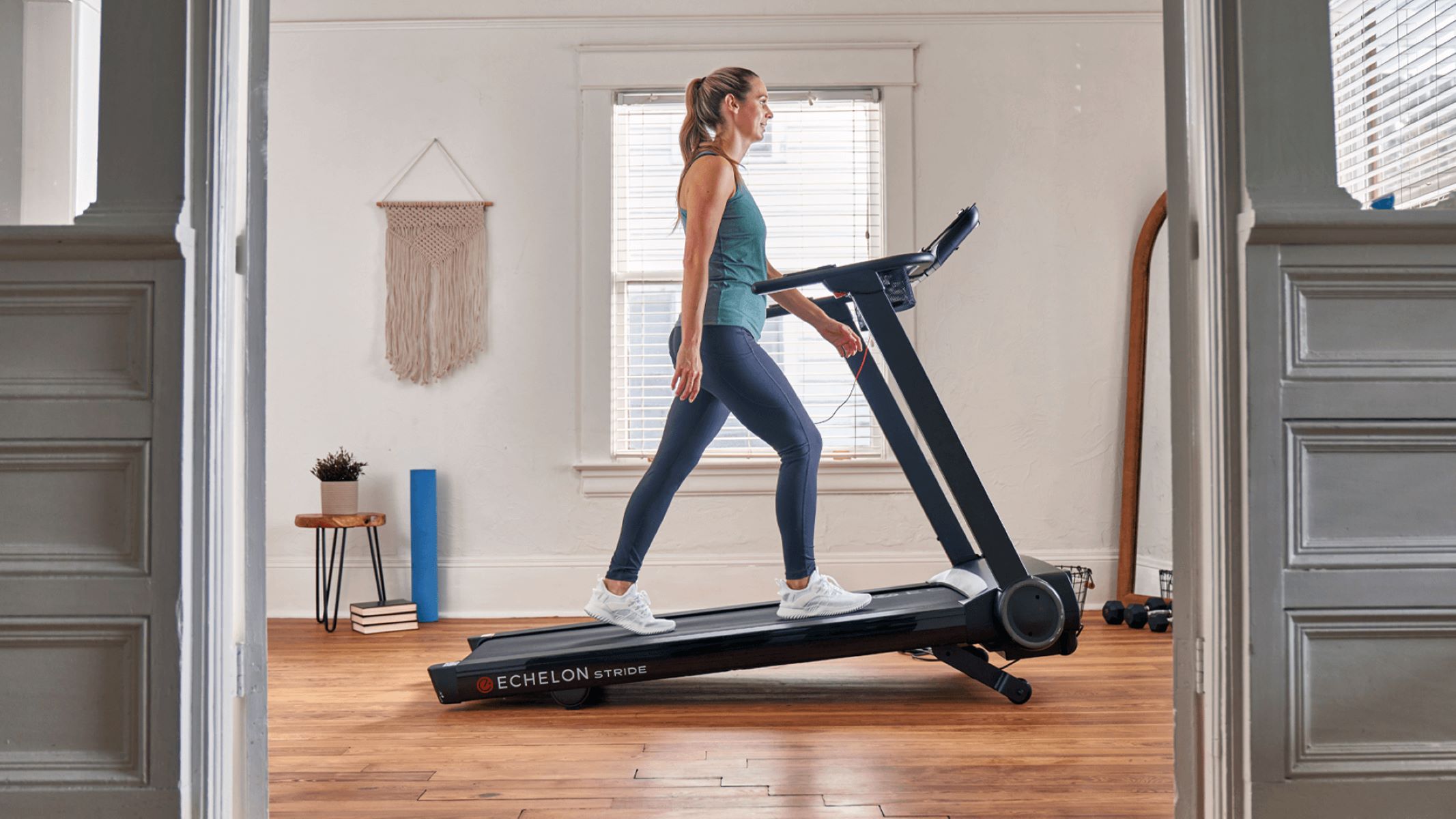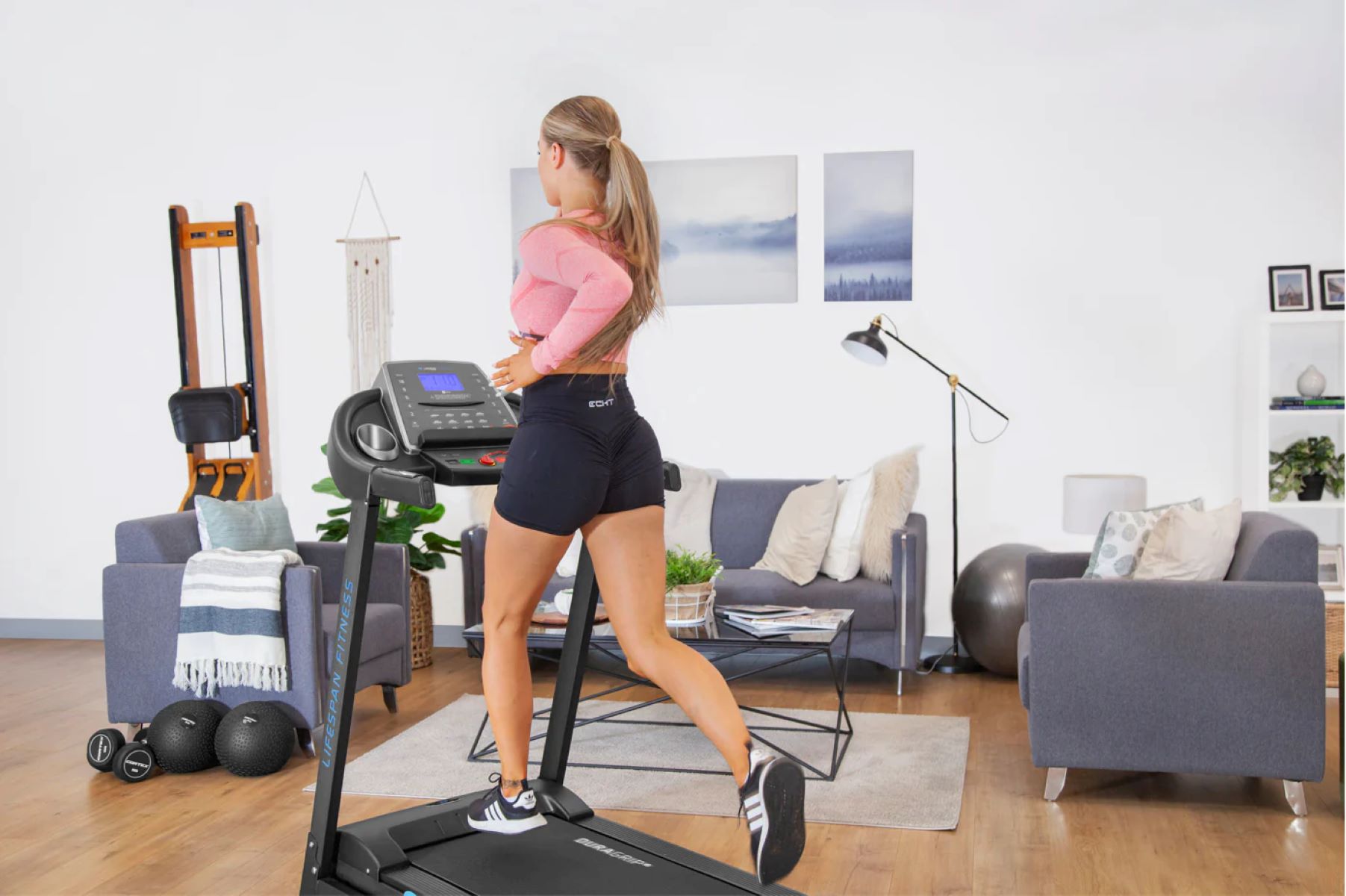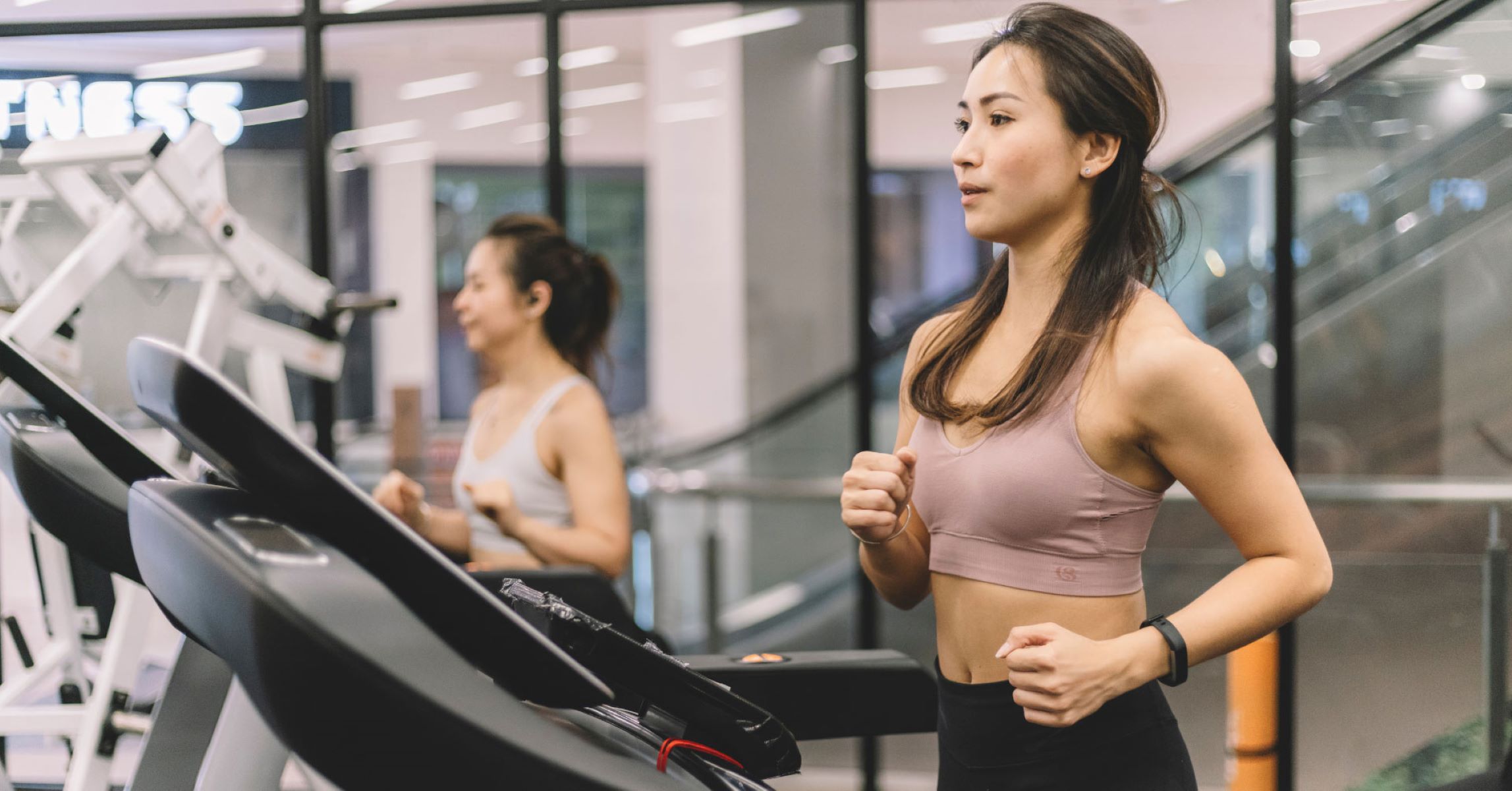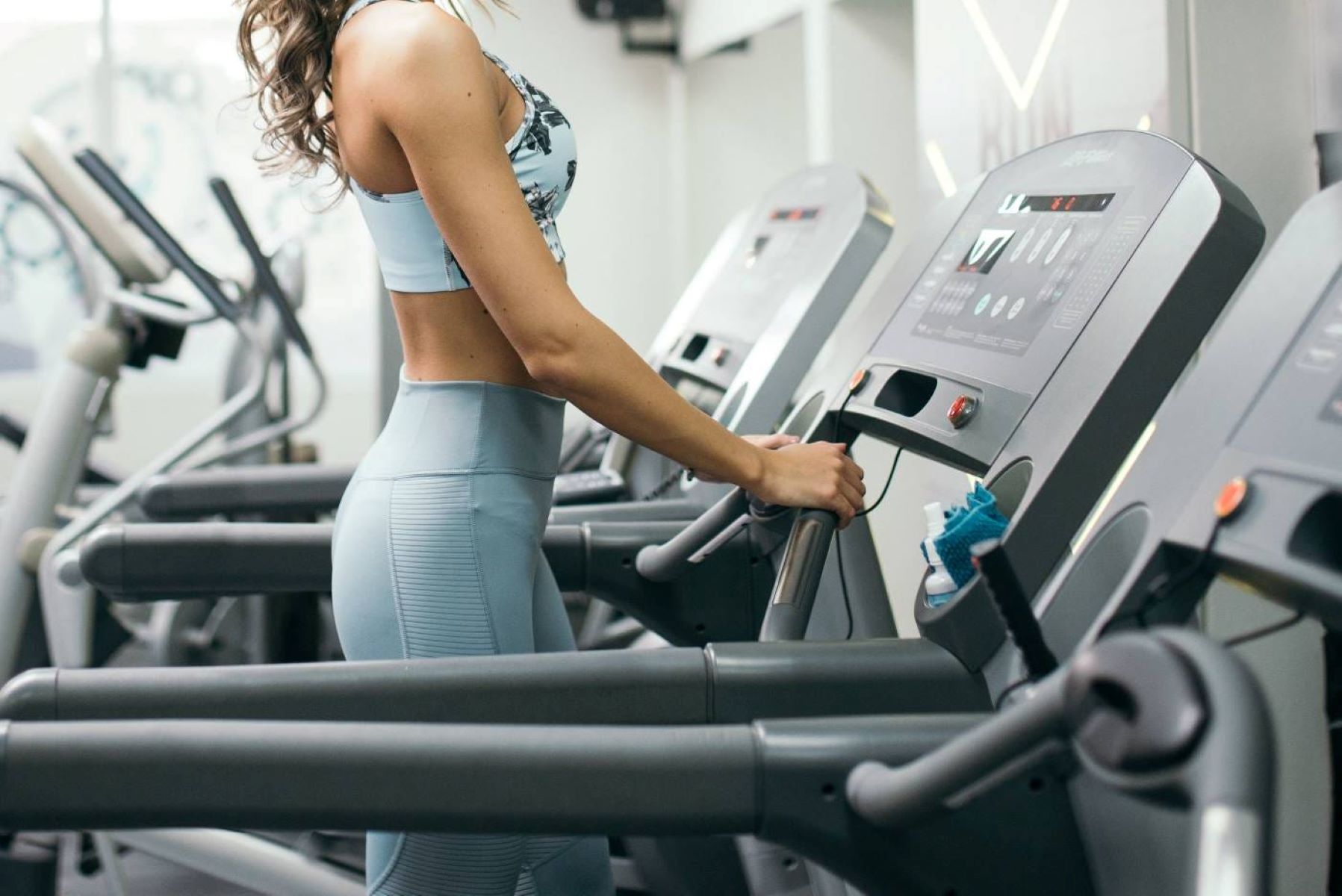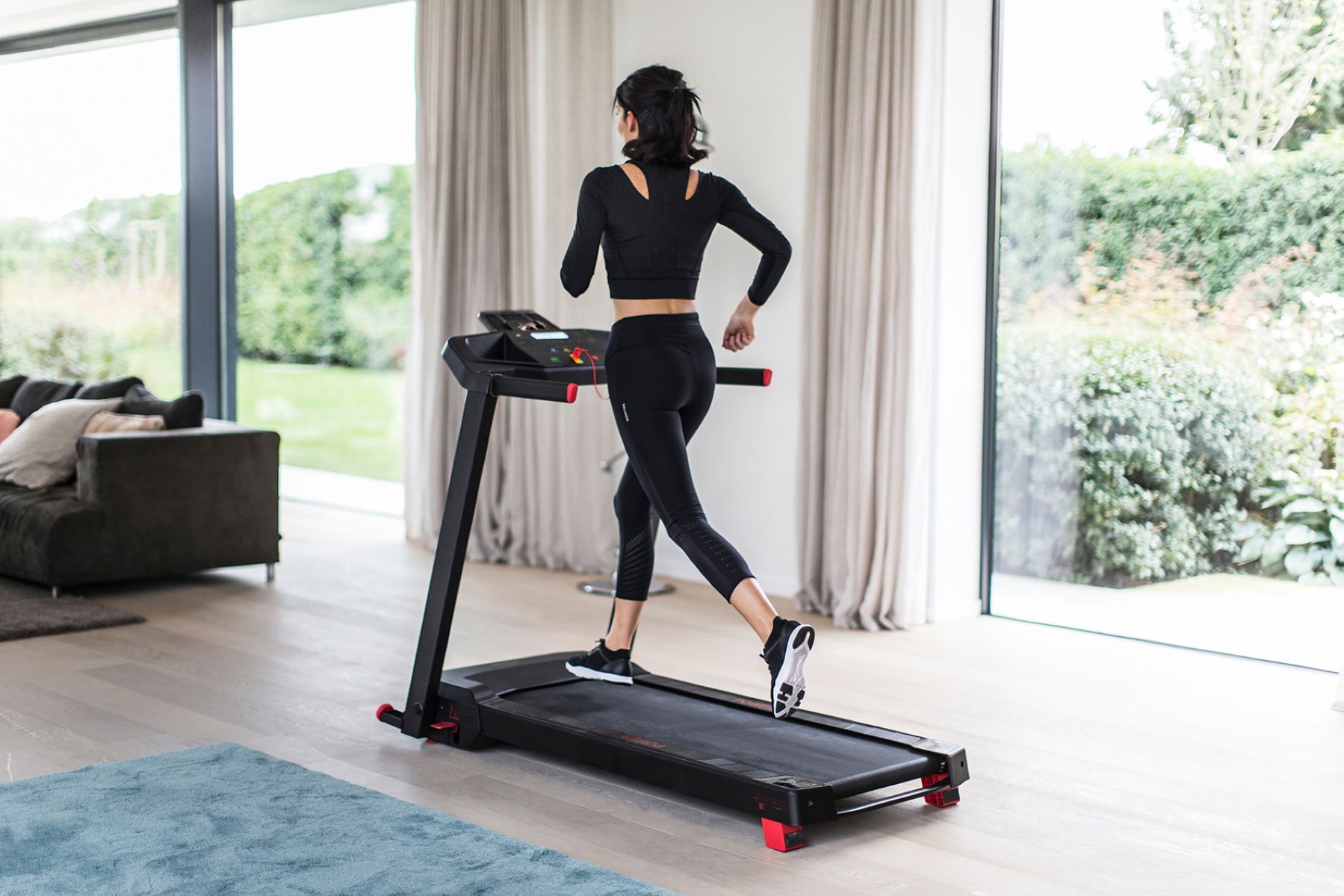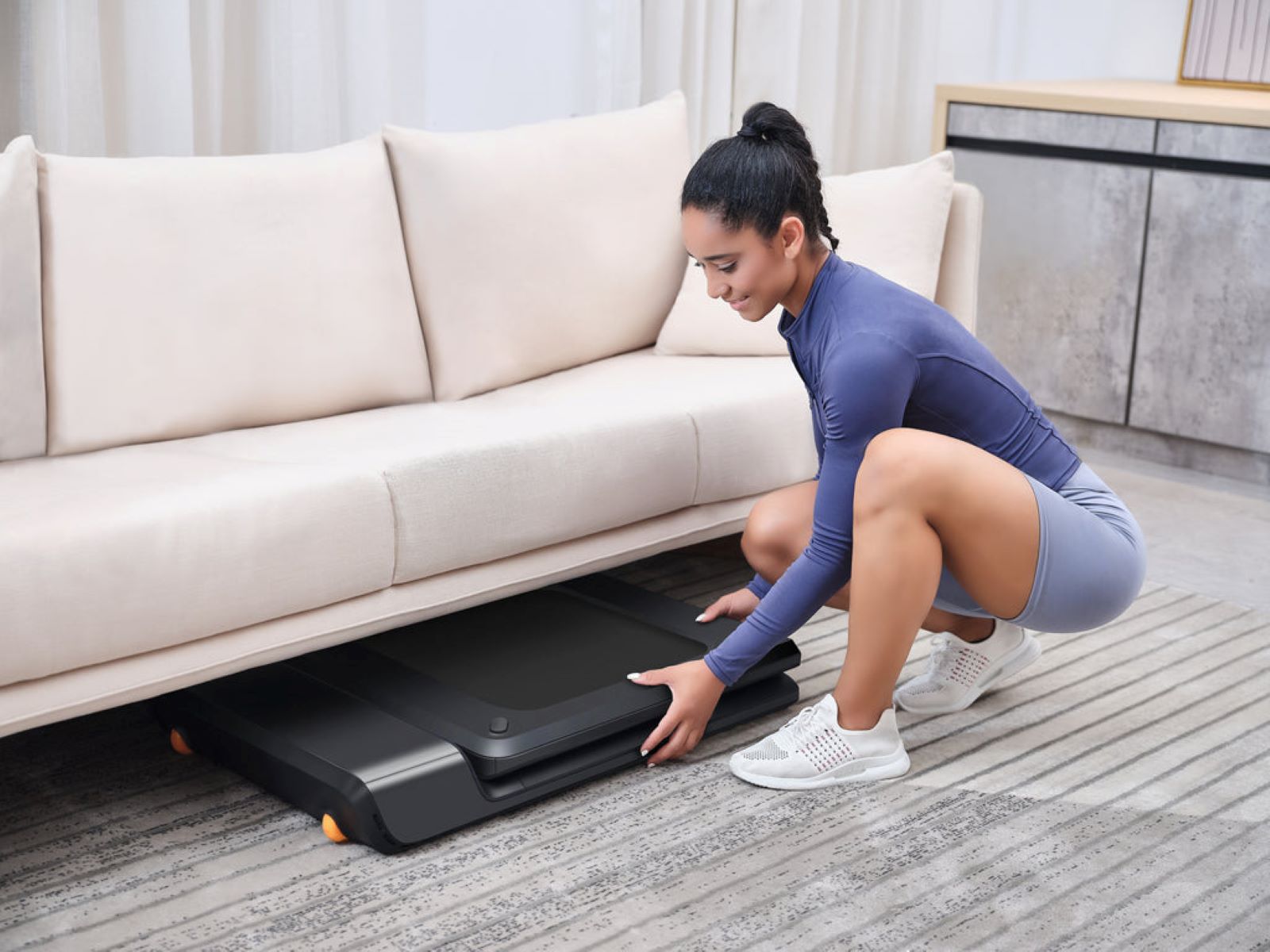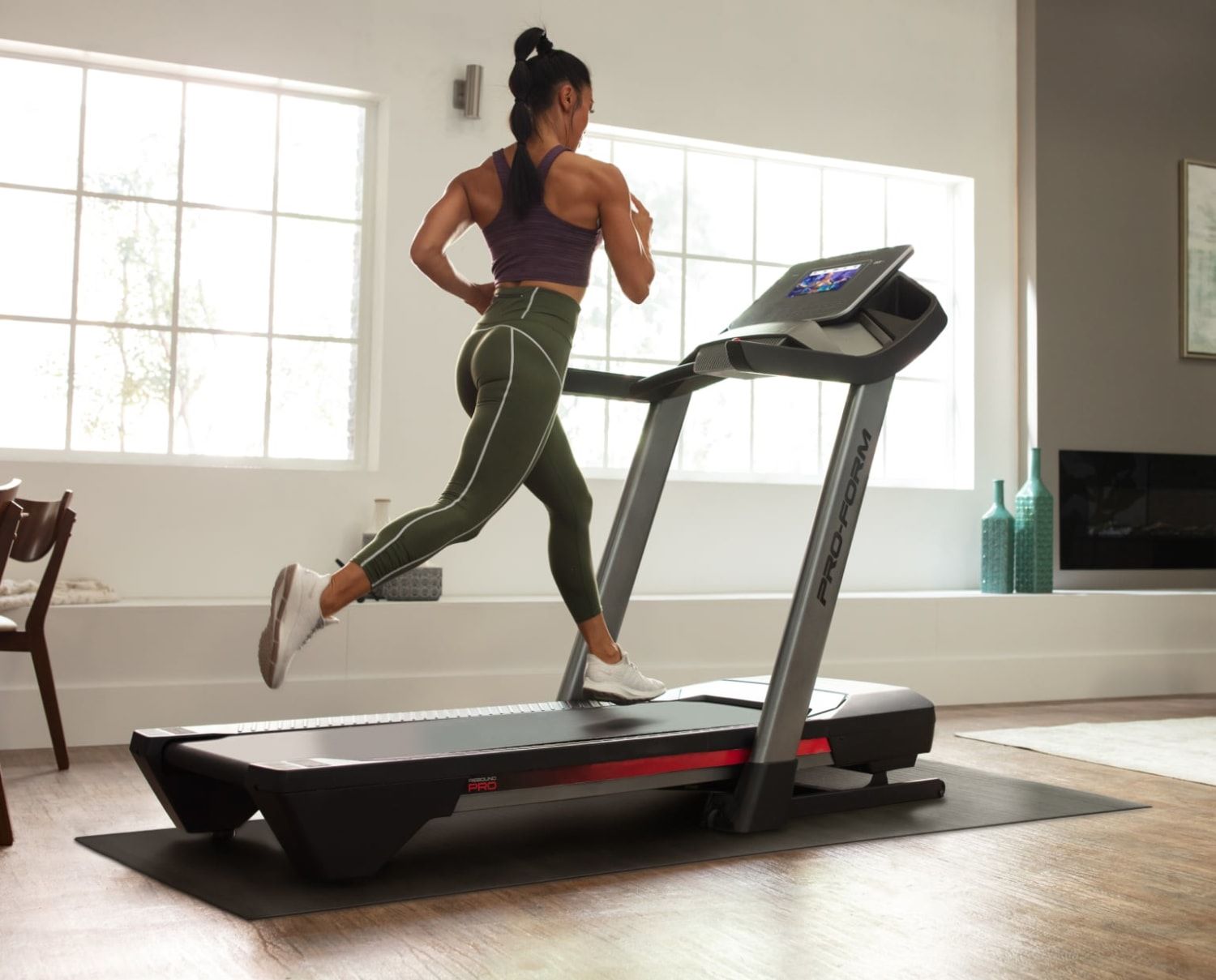

Featured
What To Put Under A Treadmill
Modified: May 22, 2024
Looking for the perfect addition to your treadmill? Discover our featured products that will enhance your workout experience and maximize your fitness goals.
Introduction
When it comes to setting up your home gym, having a treadmill is a great investment for your health and fitness. Not only does it provide an effective cardiovascular workout, but it also allows you to exercise at your own convenience in the comfort of your home. However, simply placing the treadmill directly on the floor might not be the best idea. This is where the importance of using a mat under a treadmill comes into play.
A treadmill mat serves multiple purposes in protecting your flooring, reducing noise, and providing stability during your workout sessions. Whether you have a hardwood floor, carpeted area, or even an outdoor space, using a mat underneath your treadmill can help extend the lifespan of both your treadmill and the underlying surface.
In this article, we’ll explore the benefits of using a mat under a treadmill, the different types of mats available, factors to consider when choosing a mat, how to measure the space for a mat, steps to place a mat properly, and even a DIY alternative to commercial treadmill mats. With this knowledge, you’ll be well-equipped to make an informed decision on what to put under your treadmill.
Benefits of Using a Mat under a Treadmill
Using a mat under your treadmill offers several advantages that can greatly enhance your overall exercise experience. Let’s take a closer look at some of the key benefits:
- Protects Your Flooring: One of the primary benefits of using a mat under your treadmill is that it helps protect your flooring from damage. Treadmills can be heavy and have a tendency to create vibrations, which can lead to scratches, dents, or even cracks on delicate surfaces like hardwood or tiles. A mat acts as a cushioning barrier that absorbs the impact and prevents any potential damage to your flooring.
- Noise Reduction: Treadmills can generate a considerable amount of noise, especially if you live in an apartment building or have neighbors in close proximity. Placing a mat under your treadmill helps dampen the sound and reduces the vibrations that can transmit through the floor. This not only creates a more pleasant environment for yourself but also ensures a peaceful setting for others around you.
- Enhanced Stability: When running or walking on a treadmill, having a stable and secure surface is crucial. A mat provides an extra layer of stability, reducing any potential movement or shifting of the treadmill during your workout. This helps you feel more confident and secure while exercising, preventing any accidents or injuries that may occur due to an unstable treadmill.
- Easier Maintenance: Sweating during your workout is inevitable, and the sweat can easily accumulate on the treadmill’s surface. By placing a mat under your treadmill, you create a barrier that prevents sweat from seeping into the floor and causing any damage or staining. Cleaning and maintaining your treadmill becomes much easier with a mat, as you can simply wipe down the mat instead of worrying about cleaning the entire floor.
- Prolongs Treadmill Lifespan: By using a mat under your treadmill, you help extend its lifespan. The mat absorbs the impact and reduces the wear and tear on the treadmill’s components. This can prevent premature damage or breakdown, keeping your treadmill in optimal condition for longer periods of time and saving you money on potential repairs or replacements.
With these multiple benefits, using a mat under your treadmill is a wise investment that not only protects your flooring but also improves your overall workout experience. Now that we understand the advantages, let’s explore the different types of mats available for treadmills.
Types of Mats for Treadmills
When it comes to choosing a mat for your treadmill, there are a few different options available. The type of mat you select will depend on your specific needs, budget, and the flooring where the treadmill will be placed. Let’s explore the different types of mats:
- Rubber Mats: Rubber mats are a popular choice for treadmill placement, thanks to their durability and ability to absorb shock and vibrations. These mats are typically thick and heavy-duty, making them suitable for both residential and commercial use. Rubber mats provide excellent protection for any type of flooring, including hardwood, tile, or carpet. They are also easy to clean and maintain, making them a practical choice for most treadmill users.
- Interlocking Foam Tiles: Interlocking foam tiles are a versatile option for treadmill mats. These tiles come in various thicknesses and are made from soft foam material. They provide excellent shock absorption and cushioning to minimize impact and protect your flooring. What is great about interlocking foam tiles is that you can easily customize the size and shape of the mat to fit your specific treadmill and space requirements. They also offer excellent noise reduction and can be easily replaced or rearranged if needed.
- PVC/Vinyl Mats: PVC or vinyl mats are another popular choice for treadmill mats. These mats are durable, water-resistant, and easy to clean. They are typically thinner than rubber mats but still provide adequate shock absorption and stability. PVC mats are suitable for various flooring types and are often more budget-friendly compared to rubber mats. They come in a variety of sizes and designs, allowing you to find one that matches your home gym aesthetic.
- Carpet-Specific Mats: If you have carpeted flooring, it is essential to choose a mat specifically designed for carpet use. These mats usually feature a textured, non-slip surface that grips the carpet and prevents any movement or slipping of the treadmill. They also have a moisture barrier to prevent any spills or sweat from seeping through to the carpet. Carpet-specific mats are available in various thicknesses and sizes, ensuring a perfect fit for your treadmill.
When selecting a mat for your treadmill, consider factors such as the weight and size of your treadmill, the type of flooring, and the level of cushioning and stability required. It is also important to choose a mat that is easy to clean and maintain. With the right mat, you can ensure a safe, comfortable, and enjoyable workout experience while protecting your flooring investment.
Factors to Consider When Choosing a Mat
Choosing the right mat for your treadmill involves considering several important factors. These factors will help you select a mat that not only meets your specific needs but also works well with your treadmill and the flooring in your home gym. Here are some key factors to consider when choosing a mat:
- Size and Thickness: Consider the size and thickness of the mat in relation to your treadmill. The mat should be wide and long enough to accommodate your treadmill and provide ample space for you to move comfortably. Additionally, the thickness of the mat will determine the level of shock absorption and cushioning it provides. Thicker mats are generally more effective in reducing noise and impact compared to thinner mats.
- Flooring Compatibility: Assess the type of flooring in your home gym. Different mats are suitable for different types of flooring, such as hardwood, tile, carpet, or concrete. Ensure that the mat you choose is compatible with your floor type to prevent any potential damage or slipping.
- Durability: Consider the durability and longevity of the mat. Look for mats made from high-quality materials that can withstand the weight and movement of your treadmill, as well as regular use over time. Durable mats will provide long-lasting protection for your flooring and ensure an extended lifespan.
- Noise Reduction: If noise reduction is a priority for you, opt for a mat that is specifically designed to minimize vibrations and dampen sound. Rubber mats or interlocking foam tiles are excellent choices for reducing noise and creating a quieter workout environment.
- Ease of Maintenance: Consider the ease of cleaning and maintaining the mat. Treadmills can generate sweat, dust, and debris, so choose a mat that can be easily wiped clean or vacuumed. Mats with moisture-resistant properties are especially helpful in preventing odors and the accumulation of bacteria.
- Budget: Finally, consider your budget when selecting a mat. While it’s important to invest in a quality mat that meets your needs, there are options available at various price points. Set a budget and look for mats that offer the best value for money, balancing the desired features and durability within your price range.
By considering these factors, you can make an informed decision and choose a mat that not only enhances your workout experience but also protects your flooring investment. Once you have selected the right mat, the next step is to measure the space for proper mat placement.
How to Measure the Space for a Treadmill Mat
Before purchasing a mat for your treadmill, it is important to measure the available space to ensure a proper fit. Taking accurate measurements will help you select a mat that fits perfectly in your home gym and provides optimal coverage and protection. Here are the steps to measure the space for a treadmill mat:
- Clear the Area: Move any furniture, equipment, or obstacles that may be in the way of your treadmill. Clearing the area will allow you to accurately measure the available space.
- Measure the Length: Using a measuring tape or ruler, measure the length of the area where the treadmill will be placed. Start from the wall or edge of the room and measure to the desired location where the front end of the treadmill will be positioned.
- Measure the Width: Next, measure the width of the space. This measurement will determine the width of the mat. Ensure that the mat is wide enough to accommodate the base of the treadmill and provide additional space on either side for stability and movement.
- Consider Orientation: Depending on the layout of your home gym, you may need to consider the orientation of the treadmill and the space available. If there are any restrictions or limitations in terms of length or width, be sure to account for them when selecting a mat.
- Add Extra Space: It’s always a good idea to add a few extra inches to both the length and width measurements to account for any movement or adjustments needed during workouts. This will ensure that the mat provides sufficient coverage and stability during your treadmill sessions.
By following these simple steps, you can accurately measure the space and select a treadmill mat that fits perfectly within your home gym layout. Once you have the measurements, you can proceed with purchasing the mat and preparing to place it under your treadmill.
Steps to Place a Mat under a Treadmill
Once you have obtained the appropriate mat for your treadmill and measured the space, it’s time to place the mat under your treadmill. Properly placing the mat will ensure stability, protection, and an optimal workout experience. Here are the steps to follow:
- Clean the Floor: Before placing the mat, ensure that the floor is clean and free from any dust, dirt, or debris. This will create a clean surface for the mat to adhere to and prevent any potential damage to the flooring.
- Position the Mat: Place the mat in the desired location where you measured the space for your treadmill. Align the mat so that it is centered and straight, ensuring equal coverage on all sides.
- Move the Treadmill: Carefully move the treadmill onto the mat, ensuring that it is positioned in the middle and evenly distributed. Check that all the feet or stabilizers of the treadmill are resting securely on the mat.
- Adjust the Treadmill Levelers: If your treadmill has adjustable levelers, make sure to adjust them accordingly to ensure that the treadmill is level and stable on the mat. This will prevent any unnecessary movement or rocking during your workout.
- Secure the Mat: If desired, you can use double-sided adhesive tape or a nonslip mat gripper to secure the mat to the floor. This will prevent any shifting or movement of the mat during intense exercise sessions.
- Test for Stability: Give the treadmill a gentle shake and ensure that it feels stable and secure on the mat. If there is any wobbling or instability, readjust the treadmill placement or levelers until it feels sturdy.
By following these steps, you can properly place the mat under your treadmill, ensuring a secure and stable foundation for your workouts. With the mat in place, you can now enjoy the benefits of reduced noise, enhanced stability, and protected flooring during your treadmill exercise sessions.
DIY Alternative to Commercial Treadmill Mats
If purchasing a commercial treadmill mat is not an option for you, don’t worry! You can create a DIY alternative using readily available materials. Here’s a simple DIY alternative to a commercial treadmill mat:
- Measure and Cut Rubber or Foam: Measure the dimensions of the area where you want to place your treadmill. Then, purchase a thick rubber or foam mat that is larger than the treadmill’s footprint. Using a utility knife or scissors, cut the rubber or foam mat to match the size of the measured area.
- Add Grip or Traction: To enhance stability, you can add grip or traction to the DIY mat. One option is to apply adhesive nonslip grip pads to the bottom of the mat. These pads will prevent the mat from slipping or sliding on the floor, providing extra security during your workouts.
- Test for Stability: Place the DIY mat under your treadmill and test for stability. Ensure that the treadmill is level and secure on the mat. If necessary, adjust the placement or add additional grip pads to improve stability.
- Clean and Maintain: Just like with commercial mats, it’s important to clean and maintain your DIY mat regularly. Vacuum or sweep the mat to remove any dirt or debris, and wipe it down with a damp cloth to keep it clean.
While a DIY alternative may not offer the same level of durability and specialized features as a commercial treadmill mat, it can still provide some protection for your flooring and reduce noise and vibrations. However, keep in mind that DIY mats may not have the same level of shock absorption as commercial mats, so it’s important to be cautious during intense workouts to avoid any potential damage to your treadmill or flooring.
Remember, a DIY alternative is a temporary solution, and it’s recommended to invest in a commercial treadmill mat for long-term use. However, if you’re on a tight budget or need a quick fix, a DIY mat can serve as a viable option until you’re able to purchase a proper commercial mat.
Conclusion
Choosing the right mat for your treadmill is an important consideration to enhance your workout experience and protect your flooring investment. Whether you opt for a commercial treadmill mat or a DIY alternative, the benefits of using a mat are significant. It provides protection for your flooring, reduces noise, enhances stability, and prolongs the lifespan of your treadmill. By taking the time to measure the space, select the appropriate mat, and properly place it under your treadmill, you can ensure a safe and enjoyable exercise routine.
When selecting a mat, consider factors like size, thickness, compatibility with your flooring, durability, noise reduction, and ease of maintenance. By doing so, you can choose a mat that meets your specific needs and budget. Additionally, exploring different types of mats, such as rubber, foam, PVC, or carpet-specific, will help you find the best option for your home gym environment.
If purchasing a commercial mat is not feasible, you can create a DIY alternative using materials like rubber or foam. While a DIY mat may not offer the same features as a commercial one, it can serve as a temporary solution until you’re able to invest in a proper mat.
Remember, using a mat under your treadmill is not only beneficial for your workout experience but also essential for protecting your flooring. By following the recommended steps, you can ensure stability, reduce noise, and prolong the lifespan of both your treadmill and flooring. So take the time to find the right mat for your treadmill and enjoy a comfortable and effective workout in your home gym.
